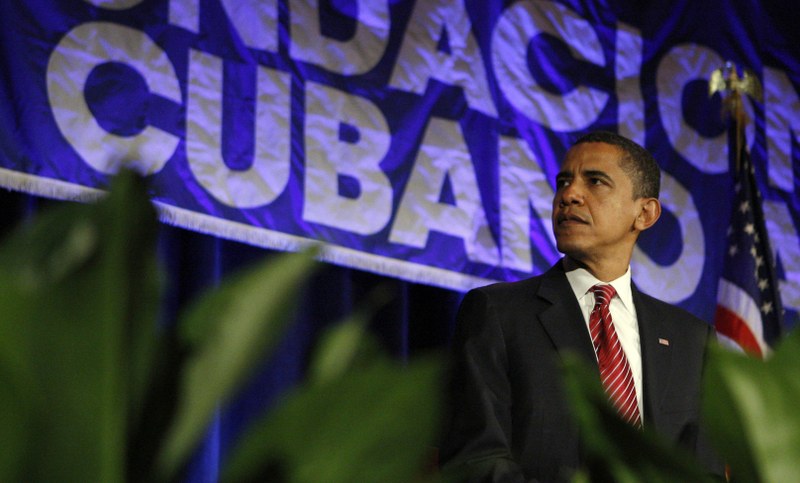By: Marco Roca
With Nov. 6, 2012 forever inscribed in the reams of history, future generations will look back at what was supposed to be a close race and see that Obama won 332 votes to Romney’s 206 in an electoral landslide. Intuitively, many of us may credit Romney’s defeat to his popularized portrayal as a “fat cat” against America’s cars, minorities, and, infamously, the “47 percent.” However, all of those perceived negatives could have been neutralized had America’s voting Latinos not dealt Governor Romney a crippling and paltry 27 percent of their vote.
According to the census bureau, as of July 1, 2011, Hispanics constitute 16.7 percent of the nation’s total population, or 52 million citizens. Worldwide, only Mexico has a larger Hispanic population. Between 2000 and 2010, the Hispanic population increased 43 percent, and Hispanics are projected to constitute 30 percent of the nation’s population by 2050. Clearly, the Latino vote is increasingly a force to be reckoned with. The importance of the Latino vote is further propagated by the fact that only about 50 percent of Latinos voted (one of the lowest turnouts for any group); trends predict that turnout will only rise with future population growth. Demonstrating superior demographic acumen, President Obama’s team recognized this trend and fought viciously to capture 71 percent of the total Latino vote, which, in turn, made up 15 percent of Obama’s national tally. In elections decided by a percentage point or two, resounding leads in any voting bloc can prove to be decisive. Nowhere is this more apparent than in the swing states, where Latino support for Obama was particularly acute and inarguably delivered Nevada, Florida, and Colorado victories.
In spite of overwhelming support for the Democrats this past election season, Hispanic Americans should be as strong of a base for the Republican Party as white southern males. Currently, a 26.6 percent poverty rate and a 30.7 percent medically uninsured population push the group to the left, but Latino culture fits into the fabric of the Republican party far more naturally. Economically, Latinos are accustomed to some of the world’s greatest income disparities in their countries of origin and are consequently surprisingly conservative on the issue of wealth inequality when they come to the United States. Furthermore, Latinos own nearly one in every ten businesses in the United States, most of which are small businesses, a tenant of the Republican platform. Socially, Latinos are 93 percent Christian (70 percent Catholic and 23 percent Protestant or Evangelical), and they make Christianity and its social teachings central to their cultural identity. Thus, Hispanics are typically traditional in their pro-life and anti-gay marriage outlook. Finally, 74 percent of Latinos say that they identify most with being American, while only 19 percent say they identify with being both American and Latino, and a meager 4 percent identify more with their original country. This incontrovertibly demonstrates that Hispanics aspire to blend into the great American melting pot and identify with the party that most obviously seeks to preserve the traditionally American way. It is the conservative message of hard work reaping great reward that compelled millions of industrious and entrepreneurial Hispanics to risk their established ways of life in favor of the pursuit of upward mobility in the United States. The secular “nanny state” ideal popular among liberals doesn’t appeal to nearly as many Latinos as the past election would suggest.
If the GOP wants to remain a major player in American politics, it must embrace Latinos as the all-important political demographic they have become. Rudy Lopez, the political director for the Campaign for Community Change, asserts, “With Hispanics, it’s not really about any one party. It’s about the issues they care about- jobs, health care, and the connective issue is immigration.” Mitt Romney, plagued by starkly conservative Tea Party voters in the Republican primaries, made the critical error of alienating Latinos by using the immigration issue as an opportunity to portray himself as the standard-bearer of conservatism. After proposing a self-deportation strategy reliant upon making life for Latinos in the United States intolerable, Romney sealed his fate. As recently as 2004, George W. Bush claimed 44 percent of the Latino vote, demonstrating how much of a swing group, albeit left leaning, Latinos are. If Republicans begin to treat immigration with the delicacy it merits, they will begin to see significant gains in the ever-elusive Hispanic coalition. Republicans must recognize the opportunity for taking the reins on immigration reform and fully support Latino GOP leaders like Marco Rubio, Susana Martinez, and Brian Sandoval in their moderate ideas on immigration. Only then can the Republicans prove to a persuadable but skeptical Hispanic voting bloc that the GOP is committed to the issues facing all Hispanics. Without the trepidation that an incumbent Republican will attempt to deport a Latino person’s friends and family members, Republicans will finally make inroads with Latinos from countries other than Cuba or Venezuela, Republican sects of the Latino population who have firsthand knowledge of the horrors of rampant communism and poorly construed socialism. This breakthrough would be particularly noteworthy, as 63 percent of Hispanics in the United States are Mexican and another 9 percent are Puerto Rican (with voting capabilities).
It’s certainly no easy feat, but the GOP’s political vitality relies largely upon attracting more Hispanic voters. The urgency for a new immigration platform cannot be stressed enough, as the Republicans must win over large amounts of the Latino population before voting Democrat becomes part of their political identity. Generational political isolation has already occurred with African Americans, who understandably didn’t take kindly to the GOP’s Southern Strategy of supporting blatantly racist policies to attract White Southern voters. Once the Latino vote begins to lean Republican, as it intuitively should, the electoral landscape will undergo sweeping transmutation. California and New York will become swing states, Florida, Nevada, New Mexico and Colorado will become solidly republican, and states like Texas and Arizona will remain Republican for generations to come. Political parties must adapt to the times or fade into antiquity.
*Note: the words “Hispanic” and “Latino” are used interchangeably in this article.

